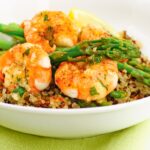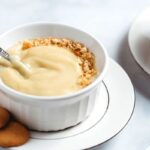Embark on a culinary journey exploring the vibrant world of dairy-free curries! From the fragrant spice markets of India to the bustling street food stalls of Thailand, this exploration unveils a tapestry of flavors and textures, all without compromising on richness or authenticity. Discover how diverse cultures have adapted their cherished curry recipes to cater to dairy-free lifestyles, highlighting the health benefits and incredible versatility of these plant-based delights. Prepare to be tantalized by the aromatic blends of spices, the creamy textures of coconut milk, and the satisfying depth of flavor in each unique dish.
This guide delves into the history and global appeal of curries, examining the increasing demand for dairy-free alternatives and showcasing the health advantages of such dietary choices. We’ll explore the unique flavor profiles of curries from various regions, providing detailed recipes and step-by-step instructions for creating your own dairy-free masterpieces. Learn how to expertly substitute dairy products with plant-based alternatives, achieving optimal results every time. Finally, we’ll present enticing serving suggestions and variations to personalize your curry experience, ensuring a flavorful adventure for every palate.
Regional Dairy-Free Curry Highlights

Embark on a culinary journey exploring the vibrant world of dairy-free curries, each a testament to the diverse and delicious flavors found across various regions. These recipes showcase how creamy, rich, and satisfying curries can be crafted without relying on dairy products, utilizing instead the natural richness of coconut milk, vegetables, and aromatic spices.
Dairy-Free Curry Recipes from Around the World
The following table presents three distinct dairy-free curry recipes, highlighting their unique regional characteristics and ingredient profiles. Each recipe offers a captivating culinary experience, showcasing the versatility and adaptability of curry cuisine.
| Name | Region | Key Ingredients | Special Notes |
|---|---|---|---|
| Masala Coconut Curry with Vegetables | India | Coconut milk, diced tomatoes, onions, garlic, ginger, a vibrant blend of garam masala, turmeric, cumin, coriander, chili powder, and an assortment of vegetables like potatoes, cauliflower, peas, and green beans. | This curry showcases the depth and complexity of Indian spices. The vegetables are cooked until tender, absorbing the fragrant spices and creamy coconut milk. Adjust the chili powder to control the spice level. Serve with basmati rice. |
| Green Thai Curry with Tofu | Thailand | Green curry paste (a vibrant blend of green chilies, lemongrass, galangal, kaffir lime leaves, cilantro, and other aromatics), coconut milk, firm or extra-firm tofu, bamboo shoots, bell peppers, and Thai basil. | The vibrant green curry paste provides a distinctive flavor profile, balanced by the sweetness of coconut milk and the freshness of Thai basil. The tofu adds a satisfying protein element, absorbing the flavorful curry sauce. Serve with jasmine rice. |
| Indonesian Rendang (Dairy-Free Version) | Indonesia | Coconut milk (reduced to create a rich, thick sauce), lemongrass, galangal, turmeric, candlenut, shallots, garlic, ginger, chilies, and beef (or jackfruit for a vegan option). | This slow-cooked curry is known for its rich, complex flavor and tender meat (or jackfruit). The coconut milk is reduced over low heat for hours, resulting in a deeply flavorful and intensely aromatic sauce that clings beautifully to the beef or jackfruit. Serve with steamed rice. |
Visual Representation of Key Ingredients
Imagine three vibrant still-life arrangements, each representing the key ingredients of the curries.
Masala Coconut Curry: A bowl overflowing with fragrant spices—deep orange turmeric, earthy brown cumin and coriander seeds, fiery red chili powder, and the warm brown hues of garam masala—nestled beside a creamy white coconut, halved to reveal its luscious flesh. Diced tomatoes, onions, garlic, and ginger add pops of color and texture. A medley of vibrant vegetables—green beans, peas, cauliflower florets, and golden potatoes—complete the scene.
Green Thai Curry: A lush green scene dominated by a vibrant pile of green curry paste, its intense color punctuated by the pale green of lemongrass stalks and the creamy white of coconut milk. Firm tofu cubes, bright orange bell peppers, and tender bamboo shoots add textural contrast. A sprig of fragrant Thai basil provides a final touch of freshness.
Indonesian Rendang: A rich and earthy tableau. Chunks of tender beef (or golden jackfruit) are surrounded by the creamy white of reduced coconut milk, its surface glistening with rendered fat. Fragrant lemongrass stalks, earthy galangal root, vibrant orange turmeric, and pungent shallots and garlic are artfully arranged, their aromas seemingly rising from the image. A few fiery red chilies add a final touch of heat.
From the fiery heat of a Thai green curry to the comforting warmth of an Indian coconut-based korma, the world of dairy-free curries offers an endless array of possibilities. This exploration has showcased the versatility and deliciousness of plant-based cooking, demonstrating that embracing dairy-free options doesn’t mean sacrificing flavor or tradition. Whether you’re a seasoned cook or a culinary novice, the journey of creating and savoring these tantalizing dishes is a rewarding experience. So, gather your spices, embrace the vibrant colors, and embark on your own dairy-free curry adventure – your taste buds will thank you!
Frequently Asked Questions
Can I freeze dairy-free curries?
Yes, most dairy-free curries freeze well. Allow them to cool completely before storing in airtight containers for up to 3 months.
What if I don’t have all the specified ingredients?
Feel free to substitute ingredients based on availability and preference. Experiment with different spices and vegetables to create your own unique variations.
How can I make my dairy-free curry spicier?
Add more chili flakes, chopped chilies, or a dash of chili oil to increase the heat level. Adjust to your preferred spice tolerance.
Are all coconut milks created equal for curries?
No, full-fat coconut milk generally provides the best creaminess and richness for curries. Light coconut milk will result in a thinner consistency.


